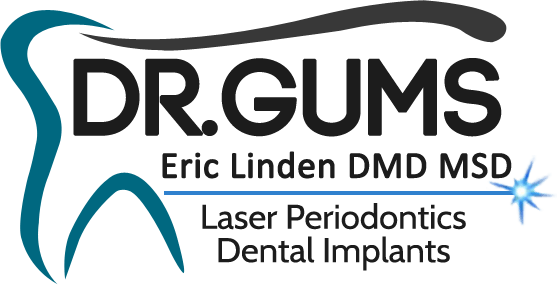CHICAGO – August 26, 2003 – A non-surgical dental procedure may reduce the risk of preterm birth in pregnant women with periodontal disease, according to new study findings. Nearly 12 percent of babies in this country are born preterm (before 37 completed weeks of pregnancy), which increases their risk of death and lasting disabilities, such as mental retardation, cerebral palsy, lung and gastrointestinal problems, and vision and hearing loss. Study Abstract *
The report was published in the Journal of Periodontology and is based on 366 pregnant women who had periodontitis (a serious gum infection that destroys attachment fibers and supporting bone that hold teeth in the mouth) and found as much as an 84 percent reduction of premature births in women who were less than 35 weeks pregnant and who received scaling and root planing. Researchers also found that adjunctive metronidazole therapy (an antibiotic used to treat infections) did not improve pregnancy outcome. In fact, women who were given the antibiotic after scaling and root planing had more preterm births than patients receiving scaling and root planing and a placebo.
“What this tells us is that scaling and root planing may significantly reduce a mother’s chance of having a preterm birth,” said said Marjorie Jeffcoat, D.M.D, study author and former Rosen professor and chair at the University of Alabama at Birmingham school of dentistry.
“We found no evidence that the addition of an antibiotic to scaling and root planing was of benefit in this study. However, more research needs to be conducted to determine the reason for the decrease in efficacy.”
Scaling and root planing is a common periodontal procedure that is performed by a periodontist, a dental practitioner who specializes in prevention, diagnosis and treatment of diseases of the supporting tissues and placement of dental implants. The tooth-root surfaces are cleaned to remove plaque and tartar from deep periodontal pockets and to smooth the root to remove bacterial toxins.
“In light of these findings, I recommend that all women who are thinking of becoming pregnant or who are pregnant receive a full periodontal exam and diagnosis,” said Jeffcoat. “Women who are already pregnant when periodontal disease is detected are ideally treated with scaling and root planing in the second trimester, which is a pragmatic protocol according to most Ob-Gyn specialists.”
Previous research reported that periodontal infections cause a faster-than-normal increase in the levels of prostaglandin and tumor necrosis factor molecules that induce labor, thus causing premature delivery before the fetus can grow to a normal birth weight. However, this is the first intervention study that offers advice on reducing the risk of premature births with scaling and root planing therapy alone.
“This is important information for the public and the medical community,” said Gordon Douglass, D.D.S., president of the American Academy of Periodontology. “Every mother wants to reduce her risk of having an unhealthy baby. A simple periodontal examination can give her the comfort of knowing that her oral health will not contribute to increasing her risk of having a preterm baby.”
Study Background
The blinded, controlled, randomized study compared three treatment groups: dental prophylaxis plus placebo, scaling and root planing plus placebo, and scaling and root planing plus metronidazole to determine if periodontitis treatment reduces the risk of spontaneous preterm birth in pregnant women.
Study participants were recruited from a large prospective study of 3,000 pregnant women who were between 21 and 25 weeks gestation and who had at least three sites (the area between teeth and gums) with clinical periodontal attachment loss greater than or equal to three millimeters. Patients were randomly assigned to one of the three treatment groups with stratification on the following factors: previous spontaneous birth at less than 35 weeks, body mass index less than 19.8, or bacterial vaginosis (vaginal bacterial infection). Participants were 85 percent African-American, 13.4 percent married and had a mean maternal age of 22 at delivery.
Similarity of treatment groups was compared for selected demographic data and the extent of periodontal disease. There were no significant differences among groups in the proportion of subjects having the following risk factors; maternal cigarette smoking, history of preterm birth prior to 35 weeks gestation, body mass index, positive vaginal fetal fibronectin, or the presence of bacterial vaginosis.
Periodontal diseases are serious bacterial infections that destroy the attachment fibers and supporting bone that hold your teeth in your mouth. When the attachment fibers are destroyed, gums separate from the teeth, forming pockets that fill with plaque and even more infection. As the disease progresses, these pockets deepen even further, more gum tissue and bone are destroyed and the teeth eventually become loose. Approximately 15 percent of adults between 21 and 50 years old and 30 percent of adults over 50 have the disease, with higher percentages often found in a pregnant population.
A referral to a periodontist in your area and free brochure samples including one titled Women and Periodontal Disease are available by calling 800-FLOSS-EM or visiting the AAP’s Web site at www.perio.org.
The American Academy of Periodontology has joined forces with the March of Dimes in its National Prematurity Campaign to improve the health of babies by preventing birth defects and infant mortality. This five-year, $75 million initiative includes more than 25 health professional, consumer and government groups who all share a common goal – to help families have healthier babies.
About the AAP
The American Academy of Periodontology (AAP) is the professional organization for

